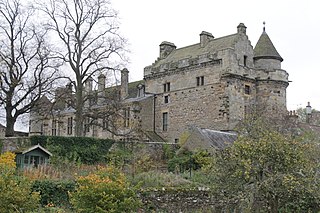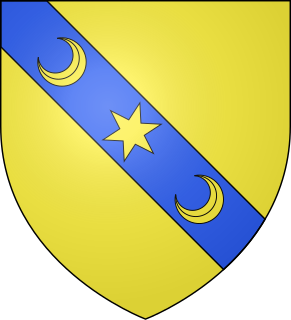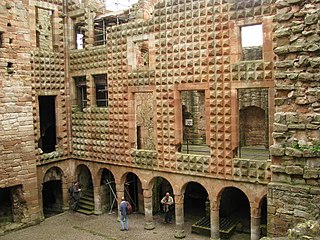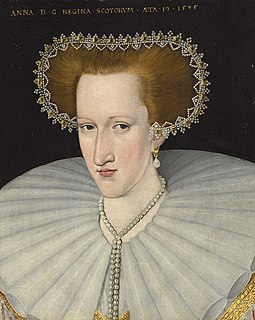
Falkland Palace, in Falkland, Fife, Scotland, is a royal palace of the Scottish Kings. It was one of the favourite places of Mary, Queen of Scots, providing an escape from political and religious turmoil. Today it is under the stewardship of Ninian Stuart, who delegates most of his duties to The National Trust for Scotland. The Chapel Royal in the Palace is dedicated to Thomas the Apostle, and is also open to the public and reserved for Catholic worship.
William Armstrong of Kinmont or Kinmont Willie was a Scottish border reiver and outlaw active in the Anglo-Scottish Border country in the last decades of the 16th century.

Walter Scott, 5th of Buccleuch, 1st Lord Scott of Buccleuch was a Scottish nobleman and famous border reiver, known as the "Bold Buccleuch" and leader of Kinmont Willie's Raid. Scott was the son of Sir Walter Scott, 4th of Buccleuch and Margaret Douglas.
Robert Stewart, 1st Earl of Orkney and Lord of Zetland (Shetland) was a recognised illegitimate son of James V, King of Scotland, and his mistress Eupheme Elphinstone. Robert Stewart was half-brother to Mary, Queen of Scots and uncle to James VI and I of Scotland and England.
Alexander Home, 1st Earl of Home and 6th Lord Home was a Scottish nobleman and Lord Warden-general of all the March.

Francis Stewart, 5th Earl of Bothwell was Commendator of Kelso Abbey and Coldingham Priory, a Privy Counsellor and Lord High Admiral of Scotland. He was a notorious conspirator, who led several uprisings against King James VI and died in poverty, in Italy, after being banished from Scotland. Francis was the first cousin of King James VI of Scotland. Francis's maternal uncle James Hepburn, 4th Earl of Bothwell was the chief suspect in the murder of James VI's father Henry Stuart, Lord Darnley.
Sir John Carmichael was a Scottish soldier, the Keeper of Liddesdale, a diplomat, and owner of Fenton Tower at Kingston, East Lothian.
Robert Bowes (1535?–1597) was an English diplomat, stationed as permanent ambassador to Scotland from 1577 to 1583.
Anne Lyon, Countess of Kinghorne, was a Scottish courtier said to be the mistress of James VI of Scotland.

Richie Graham of Brackenhill (1555-1606) was a prominent Reiver active in late sixteenth century Great Britain.
Sir Richard Cockburn of Clerkington, Lord Clerkintoun (1565–1627) was a senior government official in Scotland serving as Lord Privy Seal of Scotland during the reign of James VI.
Sir Roger Aston of Cranford, Middlesex, was an English courtier and favourite of James VI of Scotland.
William Selby, was an English member of parliament and soldier at Berwick upon Tweed.

Jacob Kroger, was a German goldsmith who worked for Anne of Denmark in Scotland and stole her jewels.
Sir James Sandilands was a courtier to King James VI and I and captain of Blackness Castle
George Nicholson or Nicolson, was an English diplomat in Scotland.

James Scott of Balwearie was a Scottish landowner and supporter of the rebel earls.

James Douglas of Spott was a Scottish landowner and conspirator.

The Raid of Holyrood was an attack on Holyrood Palace, Edinburgh on 27 December 1591 by Francis Stewart, 5th Earl of Bothwell in order to gain the favour of King James VI of Scotland.

Mangerton Tower is a ruined Scottish tower castle house formerly belonging to the Armstrong family.










